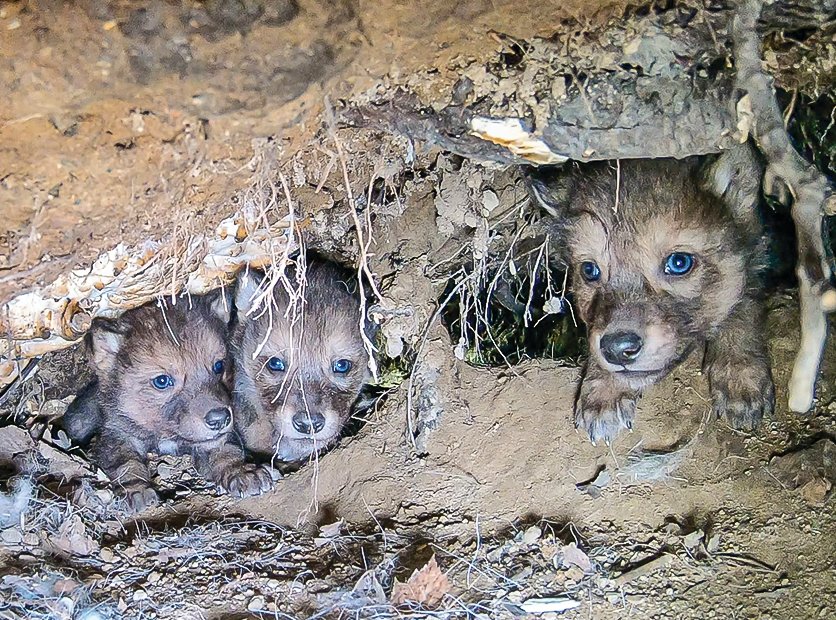Support the Timberjay by making a donation.
VNP wolves rebounding as more pups survive
New report finds wolf numbers recovering from earlier decline
VOYAGEURS NATIONAL PARK— Last year’s drought conditions didn’t seem to hamper the wolf population here, which grew 16 percent according to a report issued last week by the Voyageurs …
This item is available in full to subscribers.
Attention subscribers
To continue reading, you will need to either log in to your subscriber account, or purchase a new subscription.
If you are a current print subscriber, you can set up a free website account and connect your subscription to it by clicking here.
If you are a digital subscriber with an active, online-only subscription then you already have an account here. Just reset your password if you've not yet logged in to your account on this new site.
Otherwise, click here to view your options for subscribing.
Please log in to continue |
VNP wolves rebounding as more pups survive
New report finds wolf numbers recovering from earlier decline
VOYAGEURS NATIONAL PARK— Last year’s drought conditions didn’t seem to hamper the wolf population here, which grew 16 percent according to a report issued last week by the Voyageurs Wolf Project.
The increase was almost certainly driven by the remarkably high survival rate of wolf pups born in the spring of 2021, just over half of which (52 percent) survived through their first year of life. The improved pup survival was the primary factor behind the increase in the wolf population estimated by researchers within the Greater Voyageurs ecosystem, or GVE. According to the report, the average pack size grew from 3.1 wolves last year to 4.7 this year.
It was only the second year that researchers at the park were able to get a clear picture of pup survival and last year’s result marked a dramatic turnaround from the survival of pups born in the spring of 2020, when only seven percent lived to the following spring.
Tom Gable, lead researcher on the project said his team is still trying to better understand how and why the survival rate of pups could vary so dramatically from one year to the next. Since the young pups aren’t collared, it’s difficult for researchers to locate pups when they do die, so determining a cause of death is almost impossible.
Gable is hoping that tracking pup survival rates in the future will eventually provide enough data to possibly tease out environmental factors that influence pup success.
The wolf population does vary from year-to-year, as do virtually all wildlife populations, and it was declining as recently as 2019-2020, when it fell to the lowest level in the nine years since the wolf project began. Since then, the population has rebounded substantially and is now close to the population’s nine-year average.
The varying rates of pup survival do suggest one way that nature regulates the populations of top predators like gray wolves. In a natural setting, like the park’s Kabetogama Peninsula, wolves and deer have managed to sustain healthy populations, as is typical of predator-prey relationships allowed to operate without human interference. Indeed, Gable’s report notes that the park’s wolf population has sustained itself more-or-less at equilibrium since the 1980s, based on earlier records that preceded the Voyageurs Wolf Project.
“Our assessment suggests the current wolf population size is relatively similar to what is was 25-35 years ago, suggesting that the GVE has supported a relatively stable, high-density wolf population for decades,” writes Gable. That fact doesn’t appear to have hampered the whitetail deer or beaver populations, both of which appear to remain healthy on the Kab peninsula, which is the primary land mass within the park.
Such data may run counter to prevailing views locally on wolves and how they function in the ecosystem, but Gable said his research hasn’t found evidence to suggest wolf numbers are increasing outside of normal fluctuations in a predator population.
“People think wolf populations will always grow exponentially as if they’re some kind of super predator,” he said. “But there is no animal I’m aware of that can continue to increase its population while eliminating their food source.”
The continued survival of healthy numbers of deer and beaver, two of the park wolves’ primary prey species, is evidence that the predator populations are much more regulated by environmental factors than many in the public believe.






